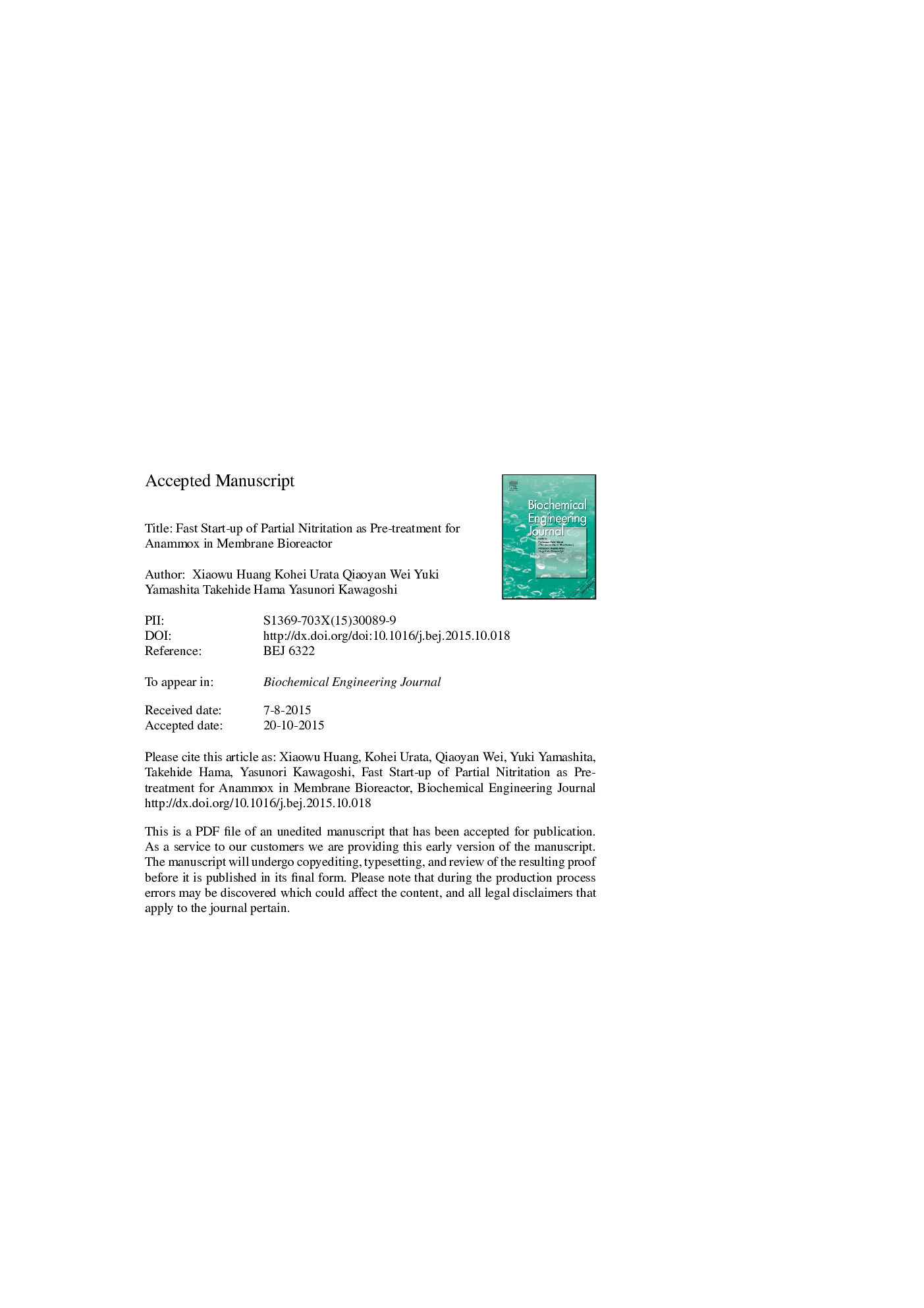| Article ID | Journal | Published Year | Pages | File Type |
|---|---|---|---|---|
| 10160537 | Biochemical Engineering Journal | 2016 | 34 Pages |
Abstract
Anaerobic ammonium oxidation (anammox) is an innovative pathway for biological nitrogen removal. The raw nitrogenous wastewater is ill-suited for direct depletion by anammox due to lack of sufficient nitrite. Partial nitritation (PN) was operated in a membrane bioreactor (MBR) to generate suitable feed for anammox, and functional microbes were analysed by 16S rRNA sequence analysis. The dissolved oxygen was adopted as the key selection factor to realize partial nitritation. The PN was realized in the MBR within 19 days. From day 26 and onwards, partial nitritation was stable and operated with an effluent NO2ï¼-N/NH4ï¼-N ratio of 1.15 ± 0.09, which was a suitable mixture to feed subsequent anammox. The free ammonia overwhelmingly restrained the activity of nitrite oxidizers. High nitrite accumulation efficiency of 94.6 ± 3.1% was achieved throughout the experiment. The optimal dissolved oxygen of the bioreactor to create suitable media was 0.8-0.9 mg Lâ1. The molecular cloning and phylogenetic analysis revealed that Nitrosospira sp. was the predominant ammonium-oxidizing bacteria corresponding to implement nitritation in the MBR. Sequences with original name of Nitrosospira sp. YKU were deposited in GenBank. The MBR promised potential merit to implement one-stage partial nitritation and anammox.
Keywords
WWTPAmmonium-oxidizing bacteriaMABRNOBSBRsRTNAEMLVSSMLSSACEUASBFNAMBRAOBHRTAnammoxOTUFree ammoniaFree nitrous acidAnaerobic ammonium oxidationdissolved oxygenMembrane bioreactorMembrane bioreactorsWastewater treatment plantWaste-water treatmentMembrane aerated biofilm reactorSequencing batch reactorMicrobial growthSludge retention timehydraulic retention timemixed liquor volatile suspended solidNleNitritationPartial nitritationnitrite-oxidizing bacteriaoperational taxonomic unitUpflow anaerobic sludge blanket
Related Topics
Physical Sciences and Engineering
Chemical Engineering
Bioengineering
Authors
Xiaowu Huang, Kohei Urata, Qiaoyan Wei, Yuki Yamashita, Takehide Hama, Yasunori Kawagoshi,
